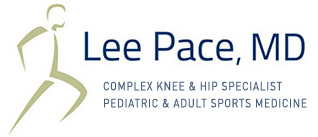
LCL Reconstruction Specialist in Farmington, CT
A trauma, sports injuries or a direct blow on the knee may cause lateral collateral ligament (LCL) tear or injury leading to instability of the knee. Lee Pace, MD provides diagnosis and LCL repair and reconstruction surgery in Farmington, CT. Lee Pace, MD also provides the highest level of care during and after the surgery. Contact Lee Pace, MD’s office for an appointment today!
What is LCL Reconstruction Surgery?
LCL reconstruction is a surgical procedure to repair a torn or damaged lateral collateral ligament in the knee using a tissue graft typically taken from a donor.
What is a Lateral Collateral Ligament?
The knee is the largest joint of the body and is stabilized by a set of ligaments. In the knee, there are four primary ligaments viz. anterior cruciate ligament (ACL), posterior cruciate ligament (PCL), medial collateral ligament (MCL) and lateral collateral ligament.
The lateral collateral ligament (LCL) is a thin set of tissue present on the outer side of the knee, connecting the thighbone (femur) to the fibula (bone of the lower leg). It provides stability as well as limits the sidewise rotation of the knee.
LCL Injuries
Tears or injury of the LCL may cause instability of the knee that can be either reconstructed or repaired to regain the strength and movement of the knee.
Causes of LCL Injuries
The lateral collateral ligament may tear due to trauma, sports injuries or a direct blow on the knee. A torn LCL may result in pain, swelling and even instability of the knee.
Diagnosis of LCL Injuries
LCL injuries and a torn LCL can be diagnosed through a physical examination and by employing imaging techniques such as X-rays or MRI scans.
Treatment of LCL Injuries
The treatment of a partially torn LCL may include non-surgical interventions such as rest, ice, elevation, bracing and physical therapy to help reduce swelling and regain activity, as well as strengthen and improve the flexibility of the knee.
Surgery is recommended if non-surgical interventions fail to provide much relief or if there is a complete tear of the ligament. Surgical interventions include repair and reconstruction of the torn ligament. In case the ligament is torn from the upper or lower ends of attachment, then repair of the LCL is done with sutures anchors. If the ligament is torn in the middle or if the injury is older than 3 weeks, LCL reconstruction is recommended.
LCL Reconstruction Procedure
LCL reconstruction involves the replacement of the torn ligament with a healthy tissue or graft. The tissue or graft is typically taken either from a tissue bank (called allograft). The type of graft used depends upon your condition and choice of your surgeon.
The procedure is performed through an open incision and not arthroscopically. The thighbone and fibula are drilled precisely and accurately with specialized instruments to form tunnels. The ends of the tendon graft are passed through tunnels and are rigidly fixed with modern implants.
Risks and Complications of LCL Reconstruction
Some of the possible risks and complications associated with LCL reconstruction include:
- Chronic pain
- Knee weakness
- Knee instability
- Peroneal nerve injury
If you would like to have additional information on knee treatments or would like to learn more about LCL reconstruction, please contact Lee Pace, MD, serving the communities of Farmington, CT.





